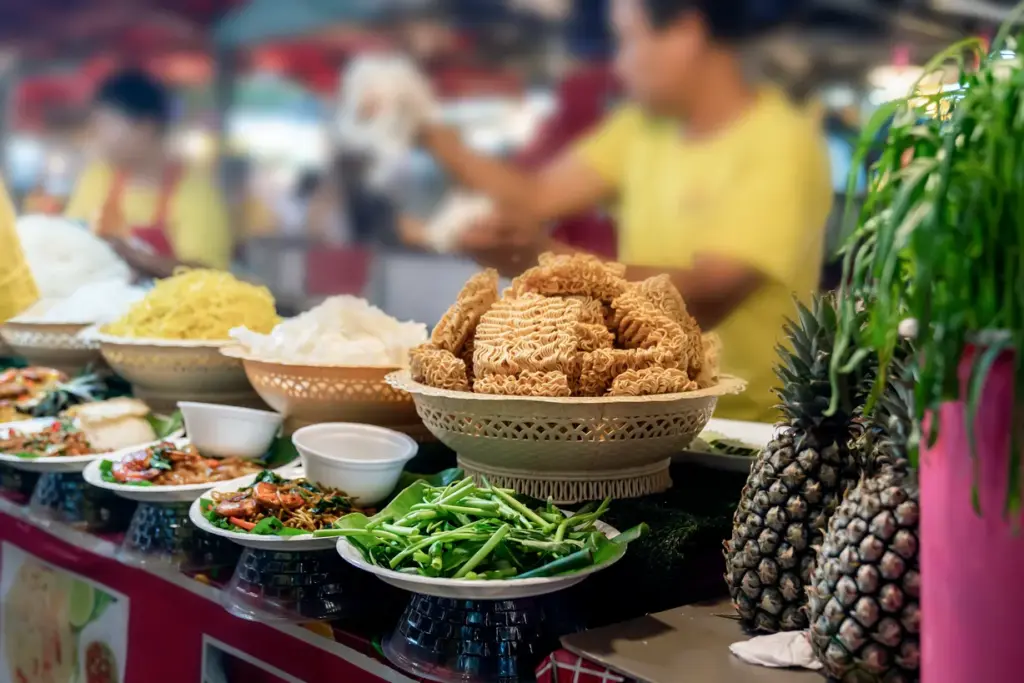Exploring the Street Food Culture of Vietnam: Pho, Banh Mi, and More
Vietnam is a country renowned for its vibrant street food culture. With bustling markets, aromatic stalls, and an array of delicious dishes, the streets of Vietnam offer a culinary adventure that every foodie needs to experience. This article delves into the rich street food heritage of Vietnam, highlighting iconic dishes like Pho and Banh Mi, while encouraging travelers to embark on their own gastronomic journey.
The Magic of Vietnamese Street Food
Vietnamese street food is much more than just a meal; it’s a cultural experience. The bustling streets are filled with the sounds of sizzling woks, the aroma of fresh herbs, and the infectious energy of locals and visitors alike. Street food is an integral part of Vietnamese life, reflecting the country’s history, diversity, and creativity.
Street food vendors often specialize in one or two items that have been perfected over generations. This dedication to their craft ensures high-quality, authentic flavors that captivate the taste buds.
Pho: The Heart of Vietnamese Cuisine
No discussion about Vietnamese street food is complete without Pho. This aromatic noodle soup, typically made with beef or chicken, is infused with savory spices and served with fresh herbs, lime, and chili. Pho is a beloved comfort food in Vietnam and is enjoyed for breakfast, lunch, or dinner.
Travelers will find Pho vendors on almost every street corner, each with their own variations and secret recipes. The broth, simmered for hours, is key to creating the deep, complex flavors that make Pho so irresistible.
Banh Mi: The Ultimate Fusion Sandwich
Banh Mi, the Vietnamese sandwich, is a testament to the country’s colonial history, blending French and Vietnamese culinary elements into a mouthwatering creation. The iconic baguette, light and crispy, is filled with a variety of ingredients such as pate, grilled meats, pickled vegetables, and fresh herbs.
Each bite of Banh Mi offers a symphony of flavors and textures, making it a favorite among locals and tourists. The versatility and customization options of Banh Mi mean there’s a version for everyone, whether you prefer savory, spicy, or tangy flavors.
The Role of Fresh Ingredients
One of the defining characteristics of Vietnamese street food is the use of fresh, locally sourced ingredients. From vibrant herbs like cilantro and basil to vegetables like bean sprouts and lettuce, these ingredients play a crucial role in creating the distinct flavors of Vietnamese cuisine.
The emphasis on freshness not only enhances the taste but also ensures that the food is healthy and nutritious. Whether it’s a bowl of Pho or a plate of spring rolls, the freshness of the ingredients is always evident in every bite.
Beyond Pho and Banh Mi
While Pho and Banh Mi are perhaps the most well-known Vietnamese street foods, there’s a myriad of other delicious dishes to explore. Bun Cha, a dish of grilled pork with vermicelli noodles, served with a side of dipping sauce and fresh greens, is a must-try.
Another popular street food is Goi Cuon, or fresh spring rolls, which are made with rice paper and filled with shrimp, pork, vegetables, and herbs. These rolls are typically served with a peanut dipping sauce that adds a rich, nutty flavor.
The Experience of Street Food Markets
Street food markets are the heart and soul of Vietnam’s culinary scene. From the bustling Ben Thanh Market in Ho Chi Minh City to the enchanting night markets of Hanoi, these markets offer a sensory overload of sights, sounds, and smells.
Exploring these markets is a delightful adventure. You can observe the cooking process, interact with vendors, and sample an array of dishes all in one place. It’s a lively atmosphere that truly captures the essence of Vietnamese street food.
Tips for Enjoying Vietnamese Street Food
For first-time travelers, navigating the world of Vietnamese street food might seem daunting. However, with a few tips, you can enjoy this culinary journey to the fullest.
First and foremost, follow the locals. If you see a crowded street food stall, it’s a good indication that the food is both delicious and safe to eat. Bring a sense of adventure, be open to trying new dishes, and don’t be afraid to ask questions or for recommendations.
Street Food Etiquette
While enjoying street food, it’s important to observe local customs and etiquette. Most street food vendors appreciate when you show respect and politeness. A big smile and a few words of thanks in Vietnamese (‘Cam on’) go a long way.
Many street stalls offer communal seating, so be prepared to share a table with locals. This can be a wonderful opportunity to engage in conversations and learn more about Vietnamese culture and food.
The Impact of Street Food on Travel
Vietnam’s street food culture has a profound impact on travel. Many visitors come to Vietnam specifically to immerse themselves in its culinary delights. The food scene adds an extra layer of richness to the travel experience, providing memorable moments and stories to share.
Moreover, street food is an affordable way to enjoy delicious meals, making Vietnam an attractive destination for budget travelers. Each bite embodies the essence of Vietnamese culture and brings a sense of connection with the local way of life.
Conclusion: Embark on Your Vietnamese Food Adventure
The street food culture of Vietnam is a treasure trove waiting to be explored. From the iconic Pho and Banh Mi to an array of other delectable dishes, Vietnamese street food offers an unforgettable culinary journey. As you wander the vibrant streets and bustling markets, you’ll discover the heart and soul of Vietnam through its food.
So pack your bags, bring your appetite, and embark on an adventure that promises to delight your senses and leave you with cherished memories. Vietnam’s street food culture is calling – it’s time to answer!



